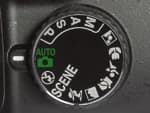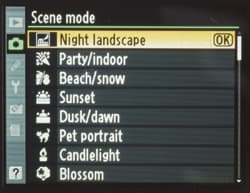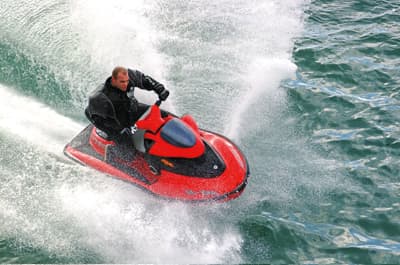All DSLRs, and most compacts, offer a variety of shooting modes, some of which are completely automatic and others requiring some input from the user. Here’s a run-down of the fully automatic exposure modes on offer.
Guide to DSLR Auto Modes: AutoMode
 The default auto mode, usually coloured green on the mode dial, is the place for beginners to start. It assumes no user knowledge and sets everything for you, without giving you the opportunity to override it.
The default auto mode, usually coloured green on the mode dial, is the place for beginners to start. It assumes no user knowledge and sets everything for you, without giving you the opportunity to override it.
For general shooting in average conditions it usually produces good results but it’s advisable to progress from this mode to the similar but slightly more controllable Program mode as soon as you can.
Guide to DSLR Auto Modes: Intelligent Auto (iA)
Also known as Smart Auto, iA uses Scene Recognition technology to identify the kind of subject you’re photographing – portrait, landscape, action or close-up shot – and then selects the appropriate scene mode for the job, to save you having to work out for yourself which scene mode to use.
This may sound lazy but if you’re suddenly faced with a great shot you could easily miss it in the time it takes to scroll through all the scene modes, work out which one you need and then select it.
Guide to DSLR Auto Modes: Scene Modes
 Many cameras offer a selection of auto modes in which the parameters used by the camera are tailored to specific subject types. These are called Scene, or Subject modes.
Many cameras offer a selection of auto modes in which the parameters used by the camera are tailored to specific subject types. These are called Scene, or Subject modes.
The advantage of these is that if the camera knows you’re shooting sports, for example, it then knows it should favour faster shutter speeds.
Most scene modes do more than just set the exposure. They can also adjust the full range of image parameters, including the ISO and White Balance, the focus mode, and even things like the sharpness and saturation.
Some scene modes are highly specific, such as Food or Fireworks modes, while others have wider appeal, such as Portrait and Action. It isn’t essential to use these modes, but they stack the odds in favour of getting a better shot of a particular type of subject if you do. Unless of course you’re a fairly experienced photographer and are able to apply the best settings manually.
Guide to DSLR Auto Modes: Action Mode

In this mode the camera selects a fast shutter speed, possibly with a higher ISO if the light levels demand it, plus continuous AF (with subject tracking, if available).
Guide to DSLR Auto Modes: Landscape Mode

This will set a moderately small aperture for sufficient depth of field, while maintaining a fast enough shutter speed to avoid camera shake. It will also set daylight white balance, single-shot AF, and a vivid colour palette.
Guide to DSLR Auto Modes: Portrait Mode

This mode is likely to select a fairly wide aperture, a neutral colour palette, single or Face Detection AF and perhaps a little moderate softening to flatter the skin tones.
Guide to DSLR Auto Modes: Close-Up Mode

This sets as small an aperture as it can while maintaining a shutter speed high enough to avoid camera shake. Single AF and vivid colour balance may also be selected.
Guide to DSLR Auto Modes: Night Portrait Mode

This balances the need for a long exposure to record the background with flash to light the subject, and balances the two exposures accordingly. Daylight white balance, Single AF and/or Face Detection and vivid colour saturation will also be activated.







